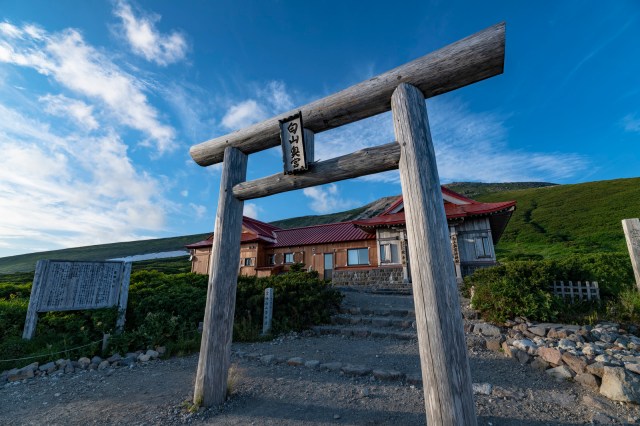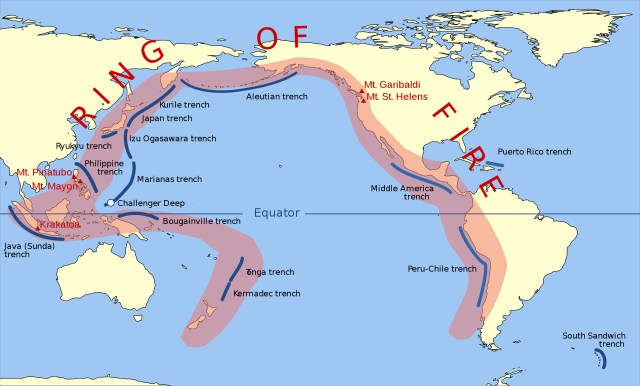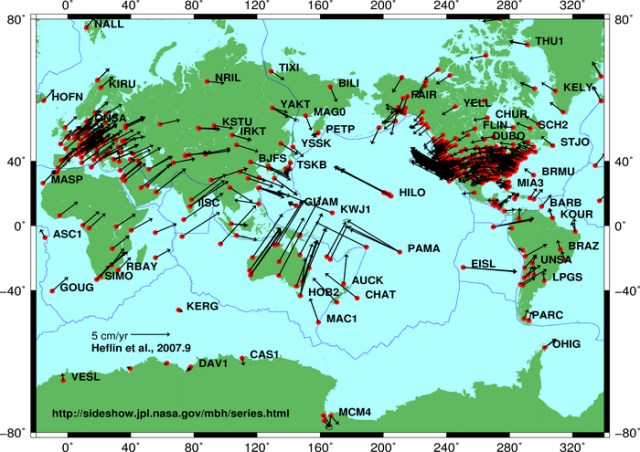
People are checking their emergency bags in fear that a big quake will arrive in the coming days.
Last month, on 13 February, Japan was rocked by a 7.1 magnitude earthquake that struck off the coast of Fukushima Prefecture, approximately 220 kilometres (135 miles) north of Tokyo.
While the tremor took some people by surprise, others weren’t shocked by it–in fact, they’d even been expecting it. Because just three days earlier, there’d been a sizeable shake in the South Pacific, southeast of New Caledonia’s Loyalty Islands.
▼ The 7.9 magnitude earthquake occurred at 10:20 p.m. on 10 February.
【海外地震】
— ウェザーニュース (@wni_jp) February 10, 2021
日本時間の2月10日(水)22時20分頃、海外で規模の大きな地震がありました。震源地は南太平洋(ローヤリティー諸島南東方)で、地震の規模はM7.9と推定されます。
この地震では津波発生の可能性があります。https://t.co/sgVSJeCs0S pic.twitter.com/18mlQDkYyv
Geological activity in the South Pacific tends to set off alarm bells for a lot of people in Japan, ever since the Great East Japan Earthquake struck on 11 March 2011, approximately two weeks after the 2011 Christchurch Earthquake devastated New Zealand’s South Island city on 22 February.
So when a series of large earthquakes occurred off the coast of New Zealand on 4 and 5 March, it set people in Japan on edge.
【海外地震】
— ウェザーニュース (@wni_jp) March 4, 2021
日本時間の3月4日(木)22時27分頃、海外で規模の大きな地震がありました。震源地はニュージーランド付近(ニュージーランド北島東方)で、地震の規模はM7.3と推定されます。PTWCによると、津波発生の可能性があります。詳細は気象庁からの発表をお待ちください。https://t.co/NugHEKUDnl pic.twitter.com/9WrgzlsSiG
Several quakes followed the initial 7.3-magnitude tremor, with the strongest measuring 8.1 in magnitude.
【海外地震】
— ウェザーニュース (@wni_jp) March 4, 2021
日本時間の3月5日(金)2時41分頃、海外で規模の大きな地震がありました。震源地は南太平洋(ケルマデック諸島)で、地震の規模はM7.5と推定されます。PTWCによると、津波発生の可能性があります。日本へ影響は調査中です。気象庁からの発表をお待ちください。https://t.co/ib5KlBGz7k pic.twitter.com/PiPD07HQKC
<更新>日本への影響は調査中
— ウェザーニュース (@wni_jp) March 4, 2021
4時59分 気象庁発表
太平洋の広域に津波発生の可能性があります。
日本への津波の有無については現在調査中です。https://t.co/H731qstBdq
Could these earthquakes be a precursor for yet another big earthquake in Japan? According to science, it’s possible.
Both Japan and New Zealand sit on the edge of the Pacific Plate in The Ring of Fire, a 40,000-kilometre (25,000-mile) long belt along which most of the world’s earthquakes occur.
As the Ring of Fire isn’t a single geological structure, earthquakes are said to occur independently of each other in the region. However, researchers say a big earthquake in one area is capable of causing other large quakes, not just nearby, but on other sides of the Earth.
Japan is particularly vulnerable to large earthquakes as it sits above four tectonic plates–the Pacific, Eurasian, North American and Philippine Sea plates all meet beneath the country, where they constantly push and grind against each other. When a buildup of stress is released on one stretch of a plate in the form of an earthquake, it’s possible for it to create a tipping point at another location, and triggering can occur.
▼ This image shows the direction of motion of the Pacific Plate Plate as it moves northwest at a speed of 7-11 centimetres (3-4 inches) a year.
That certainly doesn’t bode well for Japan, where a lot of people are going on past experience and now preparing for a quake, saying:
“When an earthquake hits New Zealand, it tends to come to Japan as well so please be careful, everyone.”
“For some reason, if an earthquake of magnitude 6-7 or more occurs elsewhere on the Pacific plate, Japan feels it within a week.”
“Time to keep the gasoline tank full.”
“I’m buying water and checking my emergency bag today.”
“There were three earthquakes greater than magnitude 7 in one day!?? This may be seriously dangerous…”
“This is the same pattern seen at the time of the Great East Japan Earthquake.”
In just a few days, remembrance ceremonies will be held in Japan to mark ten years since the Great East Japan Earthquake, which makes these recent quakes in the South Pacific even more unnerving.
While we’re yet to find out whether the tremors will have any effect on Japan, now is a good a time as any to update the emergency bag with up-to-date essential supplies.
Sources: Live Science, Science Daily, Jin
Featured image: Pakutaso
Insert images: Wikipedia/NASA, Wikipedia/Gringer
● Want to hear about SoraNews24’s latest articles as soon as they’re published? Follow us on Facebook and Twitter!



 Osaka earthquake: Scenes show damage from strongest tremor to hit the region in decades
Osaka earthquake: Scenes show damage from strongest tremor to hit the region in decades Strong earthquake hits Japan as anniversary of Fukushima disaster approaches【Photos, Videos】
Strong earthquake hits Japan as anniversary of Fukushima disaster approaches【Photos, Videos】 What should you do if you get stuck in an elevator in an earthquake? Japan’s NHK offers five tips
What should you do if you get stuck in an elevator in an earthquake? Japan’s NHK offers five tips Anime figures damaged in earthquake? Tokyo manufacturer offers to repair them for free
Anime figures damaged in earthquake? Tokyo manufacturer offers to repair them for free Mystery stink haunts Kanagawa Prefecture, worries seismologist
Mystery stink haunts Kanagawa Prefecture, worries seismologist Non-tourist trap fish market in northeastern Japan captures our hearts with amazing sashimi
Non-tourist trap fish market in northeastern Japan captures our hearts with amazing sashimi Kyoto becomes City of Yokai, with Night Parade of One Hundred Demons festival this autumn
Kyoto becomes City of Yokai, with Night Parade of One Hundred Demons festival this autumn Japan’s newest life-size Gundam is finished, receives Shinto blessing in Osaka【Video】
Japan’s newest life-size Gundam is finished, receives Shinto blessing in Osaka【Video】 Chinese drivers flocking to Japan for quick and easy route to international licenses
Chinese drivers flocking to Japan for quick and easy route to international licenses One of Japan’s most awesome rail passes, the Seishun 18 Ticket, just got a lot less awesome
One of Japan’s most awesome rail passes, the Seishun 18 Ticket, just got a lot less awesome No train, no hotel – How to do an overnight bus trip to Kanazawa from Tokyo – Part 1【Photos】
No train, no hotel – How to do an overnight bus trip to Kanazawa from Tokyo – Part 1【Photos】 McDonald’s Japan debuts new anime girl mascot character with incredibly long name
McDonald’s Japan debuts new anime girl mascot character with incredibly long name Korean basketball coach humiliates player live on TV, tapes his mouth shut
Korean basketball coach humiliates player live on TV, tapes his mouth shut We try a delicious hidden gem in Fukuoka, unknown to even Japanese people
We try a delicious hidden gem in Fukuoka, unknown to even Japanese people Studio Ghibli releases new “Butterflies in the Forest” Totoro towels
Studio Ghibli releases new “Butterflies in the Forest” Totoro towels What’s the deal with akebi, the perfectly purple, alien-like fruit that’s in season now in Japan?
What’s the deal with akebi, the perfectly purple, alien-like fruit that’s in season now in Japan? Totoro, Calcifer, other Ghibli stars returning as humidifiers ahead of Japan’s dry winter days【Pics】
Totoro, Calcifer, other Ghibli stars returning as humidifiers ahead of Japan’s dry winter days【Pics】 Is downtown Tokyo’s crazy cheap 290-yen bento boxed lunch shop still around, and is it still cheap?
Is downtown Tokyo’s crazy cheap 290-yen bento boxed lunch shop still around, and is it still cheap? Meet the kind Japanese grandpa who takes photos for tourists at the Hachiko statue in Shibuya
Meet the kind Japanese grandpa who takes photos for tourists at the Hachiko statue in Shibuya Studio Ghibli releases new mug tumblers featuring anime movie characters
Studio Ghibli releases new mug tumblers featuring anime movie characters How to power up the coolest cheap souvenir from Nintendo’s official shop with a trip to Daiso
How to power up the coolest cheap souvenir from Nintendo’s official shop with a trip to Daiso Why was the Lithuanian ambassador to Japan working in a fast food beef bowl joint in Tokyo?
Why was the Lithuanian ambassador to Japan working in a fast food beef bowl joint in Tokyo? Line of foreign tourists leads us to Akihabara’s meatiest fatty ramen【Taste test】
Line of foreign tourists leads us to Akihabara’s meatiest fatty ramen【Taste test】 Japanese convenience store Family Mart announces abolishment of eat-in spaces
Japanese convenience store Family Mart announces abolishment of eat-in spaces Studio Ghibli releases new insect whistle necklace from Nausicaä of the Valley of the Wind
Studio Ghibli releases new insect whistle necklace from Nausicaä of the Valley of the Wind Totoro sequel anime Mei and the Baby Catbus will screen at Ghibli Park this winter
Totoro sequel anime Mei and the Baby Catbus will screen at Ghibli Park this winter Starbucks Japan unveils Halloween Frappuccino for 2024, and it’s like drinking a magic spell
Starbucks Japan unveils Halloween Frappuccino for 2024, and it’s like drinking a magic spell Evangelion creator Hideaki Anno returning to anime with new project for 50-year-old franchise
Evangelion creator Hideaki Anno returning to anime with new project for 50-year-old franchise Studio Ghibli releases new Howl’s Moving Castle goods that capture the magic from the anime movie
Studio Ghibli releases new Howl’s Moving Castle goods that capture the magic from the anime movie Adult Jam Bread causes a stir at store in Tokyo
Adult Jam Bread causes a stir at store in Tokyo Right now is the peak time to go to Tokyo’s most-beautiful-view beer garden【Photos】
Right now is the peak time to go to Tokyo’s most-beautiful-view beer garden【Photos】 Pizza Hut adds a “Guilty Secret” sandwich to its menu for a limited time
Pizza Hut adds a “Guilty Secret” sandwich to its menu for a limited time McDonald’s new Happy Meals offer up cute and practical Sanrio lifestyle goods
McDonald’s new Happy Meals offer up cute and practical Sanrio lifestyle goods Foreign tourists on Shinkansen bullet train break suitcase etiquette, angering local passengers
Foreign tourists on Shinkansen bullet train break suitcase etiquette, angering local passengers [Deleted] Article written for April Fool’s Day 2018
[Deleted] Article written for April Fool’s Day 2018 Japanese government to make first change to romanization spelling rules since the 1950s
Japanese government to make first change to romanization spelling rules since the 1950s Foreigner’s request for help in Tokyo makes us sad for the state of society
Foreigner’s request for help in Tokyo makes us sad for the state of society Ghibli founders Toshio Suzuki and Hayao Miyazaki contribute to Japanese whisky Totoro label design
Ghibli founders Toshio Suzuki and Hayao Miyazaki contribute to Japanese whisky Totoro label design Tokyo’s most famous Starbucks is closed
Tokyo’s most famous Starbucks is closed Princesses, fruits, and blacksmiths: Study reveals the 30 most unusual family names in Japan
Princesses, fruits, and blacksmiths: Study reveals the 30 most unusual family names in Japan Doraemon found buried at sea as scene from 1993 anime becomes real life【Photos】
Doraemon found buried at sea as scene from 1993 anime becomes real life【Photos】 Following powerful earthquake in northern Japan, all Hokkaido payphones are now free to use
Following powerful earthquake in northern Japan, all Hokkaido payphones are now free to use Five years on, Google Maps updates images of areas affected by 2011 earthquake and tsunami
Five years on, Google Maps updates images of areas affected by 2011 earthquake and tsunami Japanese teachers confiscate students’ cell phones following Osaka earthquake, get slammed online
Japanese teachers confiscate students’ cell phones following Osaka earthquake, get slammed online National Film Archive of Japan releases shocking historical videos of 1923 Great Kanto Earthquake
National Film Archive of Japan releases shocking historical videos of 1923 Great Kanto Earthquake Annual Tokyo memorial for March 11 tsunami comes with a heartwarming musical surprise【Video】
Annual Tokyo memorial for March 11 tsunami comes with a heartwarming musical surprise【Video】 70 Japanese students volunteer to help clean Canada’s shores of Tohoku Tsunami debris
70 Japanese students volunteer to help clean Canada’s shores of Tohoku Tsunami debris Japanese teams use orange flags as a tsunami alert signal for swimmers and surfers
Japanese teams use orange flags as a tsunami alert signal for swimmers and surfers 3.11 survivors share what items they really needed during the aftermath of the disaster
3.11 survivors share what items they really needed during the aftermath of the disaster We visit a tsunami-ravaged region almost a decade after the Great East Japan Earthquake
We visit a tsunami-ravaged region almost a decade after the Great East Japan Earthquake Strong earthquake hits Hokkaido in Japan, dozens missing and injured
Strong earthquake hits Hokkaido in Japan, dozens missing and injured 97 percent of Kumamoto convenience stores open for business just three days after major quakes
97 percent of Kumamoto convenience stores open for business just three days after major quakes M5.6 earthquake in Tokyo brings some weird photos to Twitter
M5.6 earthquake in Tokyo brings some weird photos to Twitter Edo-era illustrated records show the disasters that have plagued Japan throughout its history
Edo-era illustrated records show the disasters that have plagued Japan throughout its history Boat believed to be debris from Japan’s 2011 tsunami drifts all the way to Washington
Boat believed to be debris from Japan’s 2011 tsunami drifts all the way to Washington Nintendo’s god-tier customer service continues as they offer free repairs for Noto earthquake victims
Nintendo’s god-tier customer service continues as they offer free repairs for Noto earthquake victims
Leave a Reply